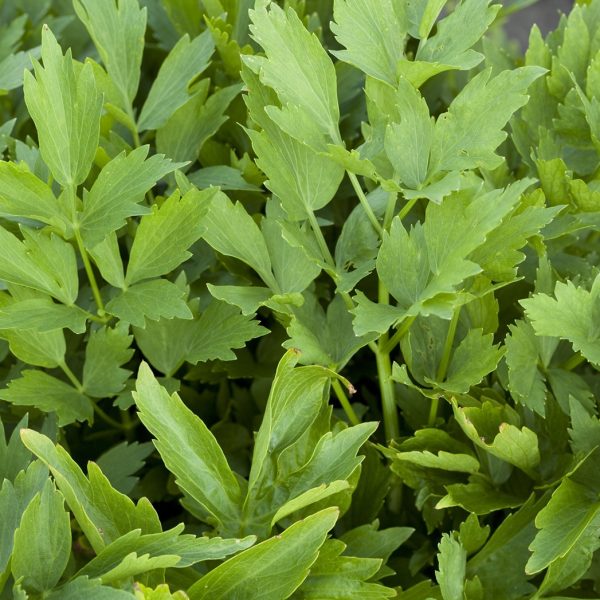In this article, we summarise the study, Herbs and spices at a relatively high culinary dosage improves 24-hour ambulatory blood pressure in adults at risk of cardiometabolic diseases: a randomized, crossover, controlled-feeding study (1).
Plant name and species
24 culinary herbs and spices were used as outlined in the supplementary material of the paper:

- Cinnamon (Cinnamomum)
- Coriander (Coriandrum sativum)
- Ginger (Zingiber officinale)
- Cumin (Cuminum cyminum)
- Parsley (Petroselinum crispum)
- Black pepper (Piper nigrum)
- Garlic (Allium sativum)
- Turmeric (Curcuma longa)
- Onion powder (Allium cepa)
- Paprika (Capsicum annuum)
- Chilli powder (Capsicum)
- Rosemary (Salvia rosmarinus)
- Cilantro (Coriandrum sativum)
- Oregano (Origanum vulgare)
- Basil (Ocimum basilicum)
- Red pepper (Capsicum annuum)
- Thyme (Thymus vulgaris)
- Bayleaf (Laurus nobilis)
- Cardamom (Elettaria cardamomum)
- Sesame seeds (Sesamum indicum)
- Sage (Salvia officinalis)
- Poppy seeds (Papaver somniferum)
- Dill weed (Anethum graveolens)
- Allspice (Pimenta dioica)
Aim of study
To assess the effect of low, moderate and high spice intake, within an average American diet, on risk factors for cardiometabolic diseases in at-risk adults.
Study method
A three-phase, randomized, crossover, controlled-feeding study. The low, moderate and high spice diets was consumed for four weeks with a two-week washout period. Outcomes were assessed at baseline and following each diet phase. The study was conducted at the Pennsylvania State University.
Herbal preparation
The herb and spice mixes were incorporated into a standard diet in three levels:
- Low-dose: 0.5 g/d at 2100 kcal (low-spice diet; LSD)
- Moderate-dose: 3.3 g/d at 2100 kcal (moderate-spice diet; MSD)
- High-dose: 6.6 g/d at 2100 kcal (high-spice diet; HSD)
The standard diet was 2100 kcals and the nutrient composition and details are in the publication. The diets were matched to accommodate the slightly varying calorific intake attributed to the herbs and spices.
Sample size
Seventy recruited participants completed the study and were included in the final analysis. They were aged between 30 and 75 years, and were recruited if they had cardiometabolic risk factors such as BMI (in kg/m2) ≥25 and ≤35, elevated glucose and other parameters as outlined in the publication.
Results of study
Outcomes included bloods:
- Serum total cholesterol, LDL cholesterol, HDL cholesterol, triglycerides, insulin, and hs-CRP
- Inflammatory markers
- Blood pressure
- Flow-mediated dilatation
- Dietary satisfaction
There were no differences between the low, moderate and high spice diets observed for LDL cholesterol which was the primary outcome.
There were between-diet differences for 24-hour systolic and diastolic ambulatory blood pressure (high diet statistically lowered systolic blood pressure compared to medium; high diet not significantly different from low; high diet statistically lowered diastolic blood pressure compared to low but not moderate). No other between-diet effects for other measures were observed.
The moderate diet (not the high or low) reduced total cholesterol and non-HDL cholesterol.The participants view of dietary satisfaction did not vary between the diets, including hunger, fullness and energy levels. The taste including saltiness was not perceived to be different between diets. Participants self-reported their liking of the amount of herbs and spices, preferring the moderate diet over the low or high.
Conclusion
High levels of dietary herb and spice (6.6 g/2100 kcal) daily for four weeks improved 24-hour blood pressure in these at-risk participants. The moderate spice diet (3.3 g/2100 kcal) lowered total cholesterol and non-HDL cholesterol, and this was the diet the participants preferred the most.

Although there were improvements in blood pressure, the herb and spice diets did not improve any other vascular markers, and the authors suspect the four-week time frame may be too short for vascular remodelling to occur. Similar studies that have seen these types of improvement incorporated spices at much higher levels — some as high as over 10 g per day.
One limitation of the study is the varying half-life of the herbs. Another study looked at the pharmacokinetics of herb and spice consumption comprising Italian herbs (rosemary, basil, thyme, oregano, and parsley) and pumpkin pie spice (cinnamon, ginger, nutmeg, and allspice). Healthy subjects consumed the mixes and metabolites were visible in the blood plasma as early as 30 minutes and up to 24 hours (2).
There is current interest in the health benefits of dietary herbs and spices for the prevention and treatment of metabolic disorders. In a scoping review, 142 clinical studies were identified for herbs and spices including black pepper, chilli, cardamom, cinnamon, coriander, cumin, fennel, fenugreek, garlic, ginger, nigella seed, rosemary, sage and turmeric, with research in both healthy and at-risk populations. Cardamom was associated with reducing inflammatory markers, and cinnamon, ginger and turmeric effective in reducing blood lipids (3).
To conclude, incorporating herbs and spices into the diet is a simple and accessible means of potentially benefiting health in relation to cardiovascular and metabolic disease. Much more research is needed to understand the benefits of individual herbs and spices, and further studies need to fully understand the levels of herb and spice consumption at baseline.
There are many more questions to ask, including the best way to prepare foods with herbs and spices, and how this can assist with other dietary and lifestyle changes to prevent and treat cardiovascular and metabolic conditions.
References
- Petersen KS, Davis KM, Rogers CJ, Proctor DN, West SG, Kris-Etherton PM. Herbs and spices at a relatively high culinary dosage improves 24-hour ambulatory blood pressure in adults at risk of cardiometabolic diseases: a randomized, crossover, controlled-feeding study. Am J Clin Nutr. 2021 Dec 1;114(6):1936-1948. doi: 10.1093/ajcn/nqab291. PMID: 34510174
- Huang Y, Edirisinghe I, Burton-Freeman BM, Sandhu AK. Characterization and Pharmacokinetic Profile of Herbs and Spices’ Phytochemicals over 24 h after Consumption in Overweight/Obese Adults. Mol Nutr Food Res. 2023 Jul;67(14):e2200785. doi: 10.1002/mnfr.202200785. Epub 2023 Jun 13. PMID: 37310415.
- Mackonochie M, Rodriguez-Mateos A, Mills S, Rolfe V. A Scoping Review of the Clinical Evidence for the Health Benefits of Culinary Doses of Herbs and Spices for the Prevention and Treatment of Metabolic Syndrome. Nutrients. 2023 Nov 22;15(23):4867. doi: 10.3390/nu15234867. PMID: 38068725.





























